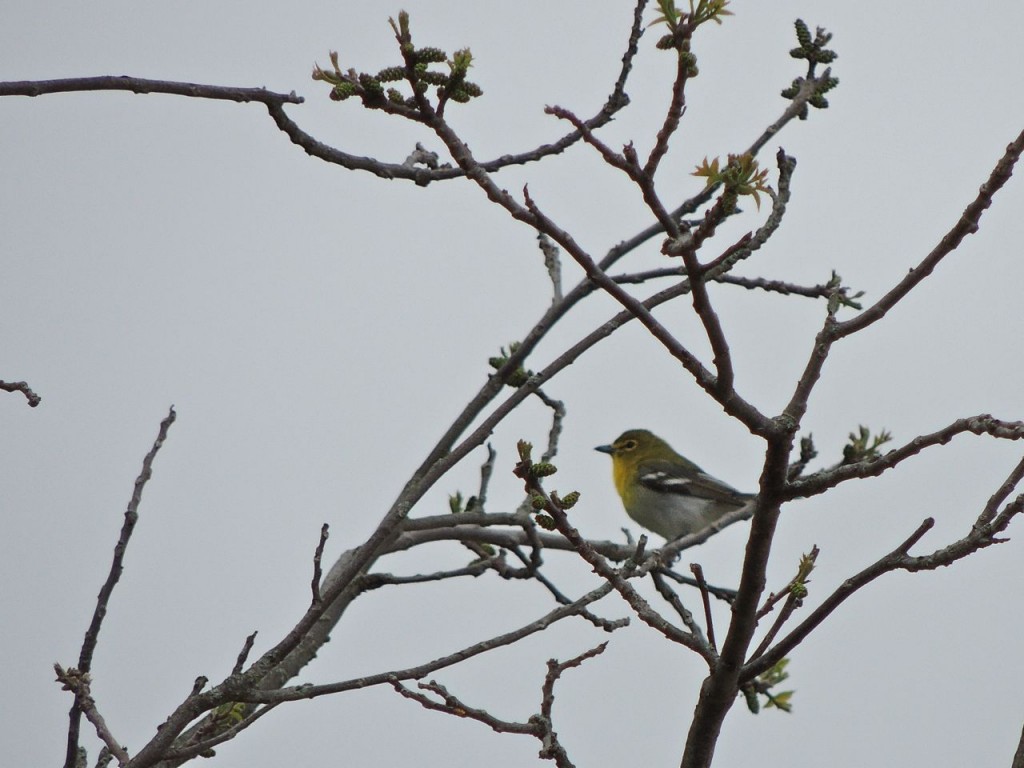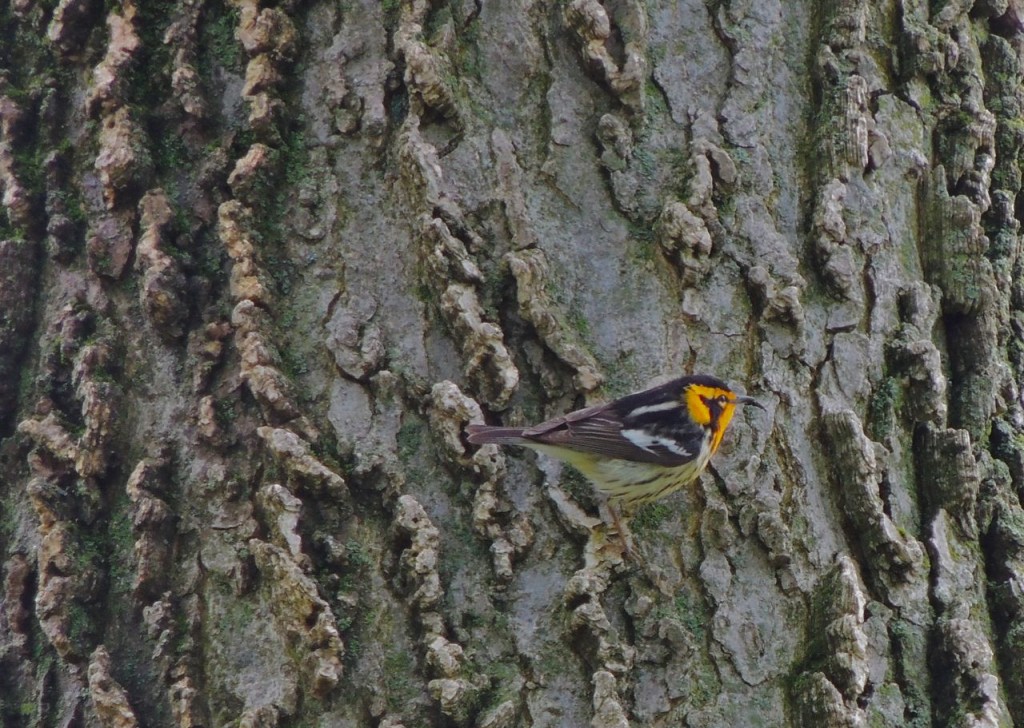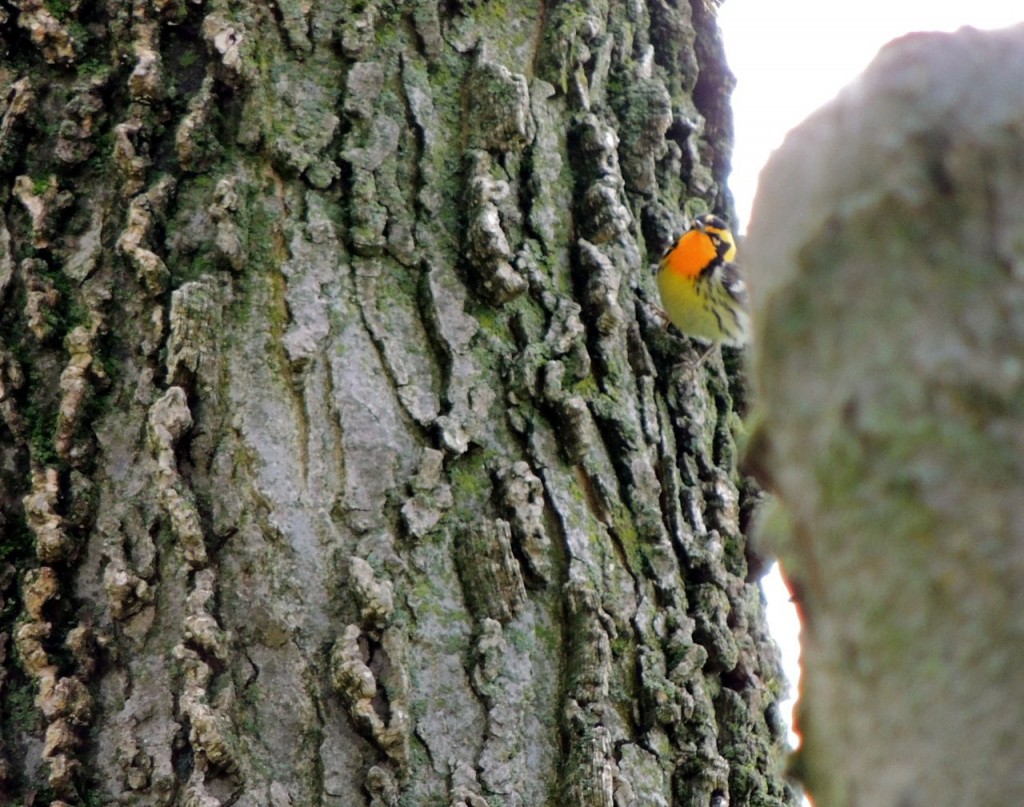The morning of 16 May 2014. Cayuga ON. I’m going to have to divide this day in two. This is the peak of the spring migration and I spent the morning at the bird observatory and part of the afternoon birding exploring a lakeside trail with a couple of younger enthusiasts. First the morning.
It was under gloomy, low-hanging clouds that I arrived at the bird observatory. I don’t know how much rain we’d had overnight, it felt as though everything needed wringing out. It must have been a prodigious amount because all of our customary trails had become watercourses, there were rivulets and mini cascades where I’d never seen or heard them before. Perhaps the ground was so waterlogged from this very wet spring, that last night’s rains had no choice but to find a way to run straight to the river. The daily census was more of a three-hour wade than anything else. But for all of that it was satisfyingly varied.
Quite early on in the census, I encountered a singing Yellow-throated Vireo. It moved in quite closely and took up some beautiful positions for photographs, but I soon learned that Yellow-throated Vireos stay still for exactly as long as it takes me to point my camera and focus, but not a millisecond longer; certainly not long enough to take the photo. I exaggerate only slightly but this shot was the best I could manage out of about fifteen attempts, most of which ended up as photos of empty branches with the occasional blurred wing or tail of a departing vireo.

The remnants of the overnight storm eventually gave way to sunshine reaching through scudding clouds, it was enough to brighten everyone up, and at last creatures of all kinds started to come out of hiding.
My field notes were lengthy. I recorded some fifty-eight species, many of them to be expected, things like House Wrens (8), Baltimore Orioles (24) and Tree Swallows (50) and many not quite surprises but notable sightings nevertheless: a single Cooper’s Hawk, Barn Swallows (16) and Indigo Buntings (2). And then of course, there were the warblers. It’s their season and I recorded ten: Blue-winged, and Yellow Warblers (both summer residents that stay breed) and (just passing through today) Yellow-rumped, Black-throated Green, Tennessee, Magnolia, Chestnut-sided, Bay-breasted, and Cape May Warblers; and Bird of the Morning two Blackburnian Warblers. Not that Blackburnians necessarily outshine the others, but this vivid male obligingly parked itself on the trunk of a Northern Hackberry to show off and effectively steal the show for a while.

